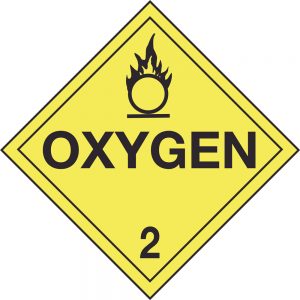By Vidya Rajan, Columnist, The Times
 Respiration is the technical term for the release of energy from food at the cellular level. On a colloquial level, it is used to describe the process of breathing. Here, I will discuss how the process of breathing using the respiratory system supports the intake of oxygen and removal of carbon dioxide, a waste product of respiration. I am going to focus narrowly on comparing mammals such as us, with insects such as bees. But I will mention here, in view of the diversity of life forms, that this is a super-narrow view, like considering apples as representative of all fruit.
Respiration is the technical term for the release of energy from food at the cellular level. On a colloquial level, it is used to describe the process of breathing. Here, I will discuss how the process of breathing using the respiratory system supports the intake of oxygen and removal of carbon dioxide, a waste product of respiration. I am going to focus narrowly on comparing mammals such as us, with insects such as bees. But I will mention here, in view of the diversity of life forms, that this is a super-narrow view, like considering apples as representative of all fruit.
The ability to use oxygen, a highly reactive molecule produced by photosynthesis, evolved along the principle of “your trash, my treasure”. Oxygen a reactive atom which grabs electrons from cellular DNA and proteins, damaging them. In a future article, I will discuss how a variety of blood pigments evolved as the body’s antixoidants: protective molecules to bind and prevent oxygen from doing harm. Another pathway to defang oxygen and make it less dangerous was also explored: since oxygen is so reactive, some chemical processes by bacteria harnessed oxygen to remove low-energy electrons from the system. [Note: Electrons carry energy. Consider that the energy that flows through your home’s electrical systems is just energy carried on electrons. That’s why it’s called electricity.] High-energy electrons can be stripped from food molecules, the energy separated from the electrons, and the energy-depleted electrons can be tossed to oxygen, which grabs them with delight making water. That’s what mitochondria, “the powerhouses of the cell” do: they separate energy from electrons and pass the electrons to oxygen to make water. If the supply of oxygen doesn’t keep up, the energy-producing process stalls. That is why you will die if you stop breathing. Since I am mainly comparing mammals and insects in this article, I will eschew analysis of how anaerobic organisms dispose of their electrons. Quick answer: one way is they use other chemicals, such as acetaldehyde instead of oxygen, to suck up electrons to make ethanol by the process known as fermentation.
To get oxygen efficiently to keep the mitochondrial powerhouses running, bodies have developed a respiratory system that hauls in oxygen and removes the food waste from which the electrons have been removed. This waste, of course, is carbon dioxide. So, in respiratory terms, oxygen in, carbon dioxide out. To accomplish this task, the body uses elementary physics: pull and push air into the body. If you’ve ever had to pull or push a large weight, you’ll find that pulling it is a little easier than pushing it: this is why we put the horse in front of the cart, and the engine in front of the train.
In mammals, the contraction of intercoastal rib and diaphragm muscles causes the chest cavity and the lungs to expand, which lowers the pressure inside relative to the outside. This pulls air into the lungs. Once inside, air enters thin, membranous bags called alveoli, where simple diffusion causes oxygen to move from its region of higher concentrations in the inhaled air into oxygen-depleted blood and causes the movement of carbon dioxide from where it is plentiful in blood, into the air chamber. The now-oxygenated blood is moved to the heart and pumped to the rest of the body to supply mitochondria with oxygen to keep the energy pump moving by removing electrons.
So far so good. But there are some bottlenecks. One is the delivery of oxygen to the mitochondria of the cell which can be addressed by an increased supply of blood, or a more effective uptake of oxygen by cells. The second bottleneck is the movement of oxygen from the air into the blood. The highest transfer is achieved when the oxygen concentration is high. A 100% concentration of oxygen would shift 50% into blood. Then equilibrium sets in and the transfer stops. Summarize that – half the concentration of the oxygen in the intake passes into blood. So, at best, with oxygen being 20% of the atmosphere, only 10% gets into the blood. At best. But the way the mammalian respiratory system operates, that 20% oxygen level is diluted, because incoming air and outgoing air mixes in the lungs. It’s as if your digestive system operated through one opening, your mouth, and food going in mixed with wastes going out. Not pretty, not desirable. Shoddy design. But the reason for this poor respiratory ability is that the lungs are repurposed structures modified from the swim bladders of fish. The earliest fish had highly vascularized thin membrane extensions called gills for gas exchange. Now, gills have terrific oxygenation capability because of a system called counter-current flow, which I don’t have space to go into here, but which maximizes oxygen transfer from water to blood. But lungs are different: they originated from swim bladders which are pouches hanging off the digestive system that fish can fill with air as a way to float higher or lower in water. These swim bladders functioned as lungs to allow some fish to venture on land as do mudskippers and bichir today – check out https://youtu.be/mKxRe0hAQmg – and eventually allowed amphibians to colonize land. To fill their lungs with air, amphibians and reptiles use chest muscles to push air in and out, like one would an ink-filler bulb on old-fashioned fountain pens. They work, but are inefficient. Mammals use a “pulling” system described above, but which mixes fresh and stale air. The most efficient respiratory system belongs to birds. Birds have a one-way loop respiratory system, rather than a two way in/out of the same opening-type system. Their hollow bones serve as air chambers so fresh inhaled air and oxygen-depleted air leaving the lungs do not mix.
What about insects? They are pretty lousy breathers, actually. They have several bottlenecks that stymie efficiency. First, they do not have a proper circulatory system. Their body is essentially a bag filled with blood, called hemocoel, and their organs are suspended in this stuff. Second, the hemocoel pigment is hemocyanin, which uses copper rather than iron, and which binds oxygen fairly poorly. Third, hemocoel circulates sluggishly. The liquid enters a tube with primitive pulsing chambers called “hearts” which push it to the head where it spills out of the tube and then sloshes back to the posterior. Thus, hemocoel is not a brilliant platform for oxygen delivery. Since their circulatory system is so inefficient, insects use tracheal tubes that lead from spiracles, openings on the surface of their body, to deliver air directly to the neighborhood of each cell from where oxygen diffuses to the mitochondria. To increase gas flow through the trachea, insects have to deliberately flex muscles to push air into and out of the trachea. You might see bees constantly flexing their abdomens even as they rest – they’re pumping air into their trachea. They need all the oxygen they can get to maintain their high energy demand for activities such as for flying.
This brings into question how small insects that breathe poorly, individually and collectively negotiate the winter in temperate areas. It would appear that their clustering habit taken together with their poor respiratory system would deliver a one-two punch and kill them by asphyxiation. But no. Bees in cluster lower their metabolic rate in a process called diapause [1]. For honeybees, there is also some evidence that bees circulate physically within the cluster, taking turns to move from the periphery (mantle) to the inside (core). What this means is not clear, metabolically speaking. Note that bees in the cluster also have to generate heat to keep the cluster from freezing and temperatures are highest in the core where oxygen is lowest. Typically, bees generate heat by shivering their thoracic muscles, a highly energy-requiring process. If this uses the mitochondria, they must consume food and oxygen, both in short supply in the core. Insects are also typically sensitive to high carbon dioxide levels that would accumulate during active metabolism. How do they balance these conflicting requirements of high thermogenesis and low access to oxygen? That is the million-dollar question.
I will examine this and other processes of metabolic regulation in a future article. In the meantime, reflect that low-calorie intake actually extends life in mice and maybe in humans. Dropping the metabolic rate may actually help bees overwinter by extending their lifespan. Talk about two birds and one stone.
Note: As I was searching for Creative Commons images to use to illustrate the various respiratory systems, I came across this animated gif by Eleanor Lutz: http://tabletopwhale.com/2014/10/24/3-different-ways-to-breathe.html. The animated gifs illustrate the different ways that three different organisms I referenced in this article breathe. It’s technically correct, informative, and beautiful. Please click on the link above. Enjoy.
- Gill, H.K., G. Goyal, and G. Chahil, Insect diapause: a review. J. Agric. Sci. Technol, 2017. 7: p. 454-473.







